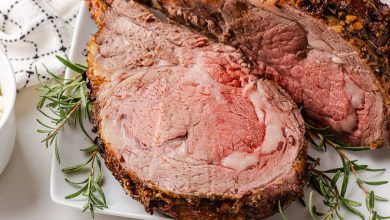Pasta (Cooked, Unenriched, with Added Salt) – Nutritional Information
This simple yet versatile pasta provides a satisfying base for a variety of dishes, from comforting casseroles to vibrant salads. While cooked pasta is known for its carb content, it also delivers a modest amount of protein and essential micronutrients, especially when prepared with added salt for flavor enhancement.
Nutritional Breakdown (per 100g)
| Nutrient | Amount |
|---|---|
| Energy | 157 kcal |
| Protein | 5.8 g |
| Fat | 0.93 g |
| Saturated Fats | 0.18 g |
| Carbohydrates | 30.59 g |
| Dietary Fiber | 1.8 g |
| Sugars | 0.56 g |
| Calcium | 7 mg |
| Iron | 0.5 mg |
| Magnesium | 18 mg |
| Phosphorus | 58 mg |
| Potassium | 44 mg |
| Sodium | 131 mg |
| Zinc | 0.51 mg |
| Copper | 0.1 mcg |
| Manganese | 0.32 mg |
| Selenium | 26.4 mcg |
| Vitamin C | 0 mg |
| Thiamin (B1) | 0.02 mg |
| Riboflavin (B2) | 0.02 mg |
| Niacin (B3) | 0.4 mg |
| Vitamin B6 | 0.049 mg |
| Folate (B9) | 7 mcg |
| Vitamin B12 | 0 mcg |
| Vitamin A | 0 mcg |
| Vitamin E | 0.06 mg |
| Vitamin D2 | 0 mcg |
Key Highlights
- Calories: At 157 kcal per 100g, this pasta is a moderate source of energy, ideal for those looking to balance their daily caloric intake.
- Protein: Offering 5.8 grams of protein, this pasta can complement meals that need an extra boost of this macronutrient, although it is not a significant source of complete protein on its own.
- Carbohydrates: The 30.59 grams of carbohydrates come primarily from starch, which provides a steady source of energy.
- Fiber: With 1.8 grams of fiber, it helps to support digestive health.
- Micronutrients: Though pasta is not a significant source of many vitamins and minerals, it does contribute small amounts of calcium, iron, magnesium, and phosphorus.
Allergen Information
Pasta typically contains gluten (wheat), so it is not suitable for those with celiac disease or a wheat allergy. If you’re looking for a gluten-free option, substitute with pasta made from rice, corn, or other gluten-free grains.
Dietary Preferences
- Vegetarian: This pasta is suitable for vegetarian diets, although it’s essential to check the ingredients for any non-vegetarian additives, especially in enriched or flavored varieties.
- Vegan: Suitable for vegans, provided that no dairy products are added during preparation or serving.
- Low-Sodium: If you are watching your sodium intake, be mindful of the added salt during cooking, as it contributes 131 mg of sodium per 100g serving.
Cooking Tips & Suggestions
- Seasoning: Experiment with adding herbs such as basil, oregano, or thyme to your pasta water for extra flavor, without significantly increasing the sodium content.
- Pairing: Serve this pasta with a variety of sauces such as marinara, pesto, or olive oil-based dressings for a healthy, balanced meal.
- Storage: Cooked pasta can be stored in the fridge for up to 3-4 days in an airtight container. To avoid clumping, drizzle a bit of olive oil over it before storing.
Conclusion
While pasta (cooked, unenriched with added salt) isn’t packed with high amounts of vitamins and minerals, it remains a highly versatile and enjoyable dish. It’s a good source of carbohydrates for energy and provides moderate amounts of protein and fiber, making it a valuable staple in balanced meals. Whether you’re preparing a quick weeknight dinner or a complex multi-course meal, pasta offers flexibility and comfort. Just be mindful of its sodium content and consider pairing it with a variety of nutrient-dense vegetables and lean proteins for a complete, well-rounded meal.










